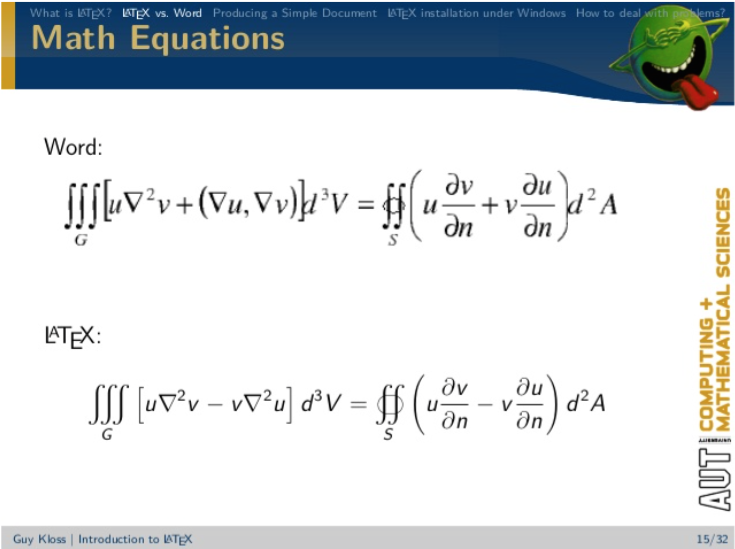Disclaimer¶
The most parts of the contents of the materials are extracted and modiefied from various resources:
- Prof. Hongyun Wang’s previous years’ lecture notes on the same topic,
- Accumulated know-hows on using LaTeX of today’s instructors (Profs. Dongwook Lee and Daniele Venturi),
- Various online sites and tutorials (make sure you visit those links included in today’s lecture note).
Why LaTeX for Scientific Writing?¶
Today we are going to learn how to write scientific documents using LaTeX. You can consider it as a word prossesor which allows you to write mathematical expressions and styles in a professional way. LaTeX is very commonly used for scientific documents publication in many research communities, including mathematical and physical science, statistics, computer science, economics, political science, especially in academia. LaTeX is far beyond better in producing neat mathematical typesets than MS word, an arguably the most popular word processor.

Figure 1. Comparison between LaTeX outputs and MS word outputs (image source: https://rpubs.com/chosenshih/wisetools).

Figure 2. Comparison between LaTeX outputs and MS word outputs (image source: http://slideplayer.com/slide/4939645/).
If you only have exposed to using GUI-based application softwares, say, microsoft words for producing documents, and haven’t had a chance to use LaTeX yet, it is a right time to do so.
Still not convinced yet? See the following articles: